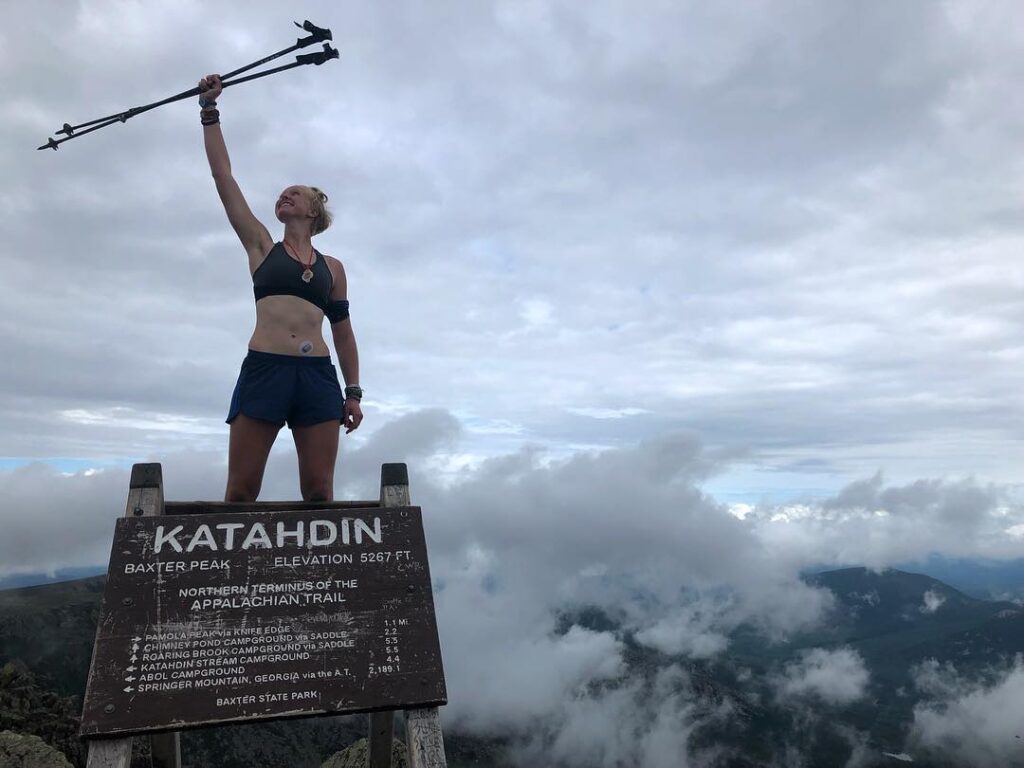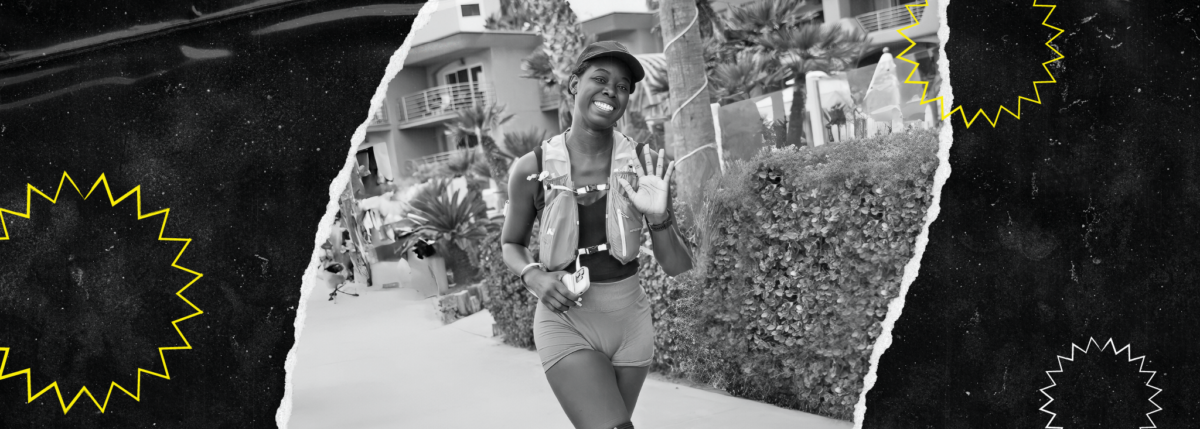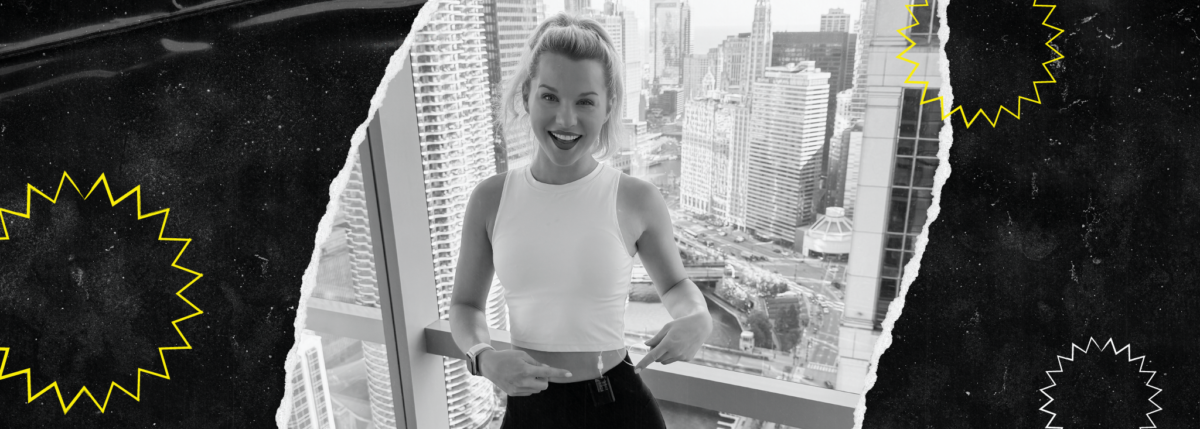Hiking the Appalachian Trail with T1D
Written by: Todd Boudreaux
6 minute read
December 13, 2018
“We were hiking along and I could feel my blood sugar go low and I heard my Dexcom beep. I was thinking, ‘Oh, man. We’re going to have to stop.’ And then we could just smell this really rank, musky kind of … just the smell of something that’s been sleeping in a cave for the past five months. We’re like, ‘Oh, that’s a bear. That is a bear.’”
When Rachel Hemond set out on her 21st birthday to hike the Appalachian Trail, it was the culmination of a life full of adventure and exploration. Rachel grew up in an area that had a huge focus on being outside, and she had been thinking about this hike since as early as 10 years old, though Rachel does admit in hindsight that, “A fifth grader hiking the trail alone would be a bold move.” When she was a senior in high school, Rachel went on a five-month expedition that included backcountry skiing, whitewater canoeing and biking around the state of Vermont. Just before she embarked, Rachel spent a month sailing from Cape Cod down to the Caribbean—she is no stranger to adventure.
Rachel has accomplished more in her young life than many do in a lifetime, and she has done so as a person with type 1 diabetes. Rachel vividly remembers the day she was diagnosed with type 1 diabetes (T1D) in 2011—it was her father’s birthday: “He got to hang out in Boston Children’s Hospital with me for his birthday present.”
The Appalachian Trail is roughly 2,200 miles long and stretches from Springer Mountain, Georgia all the way to Mt. Katahdin in Maine. Many people will hike segments of the trail, but the most avid hikers set out to traverse or thru-hike the entire trail. Thru-Hiking (Through-Hiking) is the act of hiking one long-distance trail end-to-end within one hiking season. Rachel explains, “The thing about thru-hiking is that you really don’t want to carry any weight that is even a little bit unnecessary, and that goes to the extreme; I lost my second t-shirt in Southern Maine and so I hiked the entirety of the state of Maine with just one shirt.”

As a person with T1D, Rachel’s preparation for the Appalachian Trail was exhaustive. She had decided to send herself boxes to receive along the way, a common method that thru-hikers employ. Whereas most thru-hikers are sending themselves food supplies, toiletries, gear, extra batteries, Rachel was sending ahead diabetes supplies. Before embarking on her journey, Rachel prepackaged boxes with extra Dexcom sensors and transmitters, her pump system, food and snacks. When she was nearing a destination, she would have her parents send her the necessary supplies. Rachel eventually stopped sending herself food, realizing it was cheaper and easier to just buy snacks at grocery stores. There was one exception however. Rachel insisted that her parents still send her gummies she liked because she preferred them to treat her lows.
Rachel’s method was to be overprepared. She had discussed the expedition with her medical team and planned on having backup supplies, and had extra backups in place as well. Although Rachel uses an insulin pump, she also carried long-acting insulin just in case. She had five glucagon kits with her and gave one to each of her hiking companions, who she trained on its use. Rachel’s continuous glucose monitor (CGM) was also instrumental in her quest to hike the Appalachian Trail.

“My Dexcom just gives me so much more security about the trends that I’m seeing, because I can check my blood sugar at any time during a hike… Especially on something like a thru-hike where you don’t really want to take a break. You get in the groove of your 20-mile day, and you’re going for it. And it’s raining, and I’m in the middle of the woods with no shelter, it’s nice to see my blood sugar on my phone, and not have to take out my whole kit and try to test without getting everything wet.”
Rachel’s journey began on March 1st and ended on August 9th, and she experienced all types of weather extremes along her path.
“We had freezing cold weather through mid to late-April. I kind of forgot that it really would snow on me substantially, so I got a little surprised by some snow storms, especially in the Smoky Mountains. We had six days of solid rain coming into the halfway point, which was brutal. The trail’s a flooded pond but you’re just wading through, which is exciting. But you get very soggy feet, which is not fun.”
People living with diabetes are often told the importance of proper foot care, and Rachel knew that one small infection could prevent her from finishing the hike. She told Beyond Type 1 that “the key to preventing blisters is really in your shoes, so I went to an actual outfitter… I ended up with some hiking boots that I really loved that lasted me 850 miles, until I wore a hole through them. Another important thing is just taking your shoes off a couple times throughout the day and letting your feet dry, letting your socks dry, maybe changing your socks. I wore two pairs of socks when it was cold out. And if you get a blister, deal with it right away!”

Rachel really did prepare for any conceivable event that came her way, including dealing with a low blood sugar while being pursued by a black bear. One morning in April, Rachel and the two men she had been hiking with decided to hike in the middle of the night, at 2:30 a.m. Unfortunately, it is extremely cold in April, and also the time of year that bears come out of hibernation. Rachel recalls that early morning in great detail as it is one she’ll never forget.
“We were hiking along and I could feel my blood sugar go low and I heard my Dexcom beep. I was thinking, ‘Oh, man. We’re going to have to stop.’ And then we could just smell this really rank, musky kind of … just the smell of something that’s been sleeping in a cave for the past five months. We’re like, ‘Oh, that’s a bear. That is a bear.’ And so I slowly put my gummies back in my bag because I didn’t want the bear to smell the sugar, and just kind of hiked a lot faster and hoped that it wouldn’t try to follow us… I was like, ‘Well, this low blood sugar is really just going to have to wait. There’s no good option right now.’ We made it to another shelter and I just ate so many gummy bears and a muffin I found in the top of my pack.”
The two boys with the glucagon were part of Rachel’s “trail family”—a crew of five people bound together by the monumental task ahead of them. Rachel explains how her trail family came together: “I actually met a guy on my first day, Steve, from Australia. We were hiking the same distances, we became really good friends and picked up, over the course of the next 500 miles, the other four people that became what’s called a trail family to me… Some people really do hike it alone and just see people at shelters at night, but these are just people that I ran into and that we got along really well. We decided we’ll go into town together, we’ll get meals together. We’ll end up at the same shelters at night and support each other mentally for what can be really tough. It’s really nice to get to a shelter and be like, ‘Hey, that last hill sucked. That was so horrible. Why did they do that? Who built this trail, you know?’ They’re really wonderful people that I’m still in touch with.”

Rachel and her trail family weren’t together nonstop, however. She did sometimes venture out in the mornings earlier than her companions to get a head start on the day. Rachel describes one such morning as one of the most memorable moments of her journey. Her group had recently arrived at the White Mountains in New Hampshire, and Rachel woke up early to begin the climb up Mount Moosilauke on her own.
“I’d just been booking it up this mountain, just feeling so good. Then, I started turning and I had enough of an exposed ridge that I could look down. I could see the rest of my trail family coming above the tree lines, making their way up to where I was. We all got up there and we just looked around. You could see everything … Just having that sunny day, that beautiful clear day, and realizing how far we had come was just kind of beyond words.”
After 161 days and 2,190 miles, Rachel made it to the trail’s end—the peak of Mt. Katahdin. Along the way she battled extreme weather, made lifelong friends, survived a close encounter with a black bear, and proved that people with T1D can do anything they set their minds to. And she doesn’t plan on slowing down anytime soon.

“I think the next really big hike is either the Pacific Crest Trail or the Continental Divide. I love the thru-hikes. I just love being out in the woods, like way out there, and seeing beautiful places in nature. I can’t imagine life without that.”
This article was published as part of a partnership between Beyond Type 1 and Dexcom, an active partner of Beyond Type 1 at the time of publication.

Author
Todd Boudreaux
Todd was diagnosed with type 1 diabetes in 2000 and has been unofficially advocating for type 1 diabetes ever since. Before joining the team at Beyond Type 1, Todd wrote and produced television shows for Discovery Channel, Travel Channel and Animal Planet. When he’s not in the office, you can usually find him at a baseball game, traveling, or drawing on his Etch A Sketch. You can also follow him on instagram @toddboo
Related Resources

Danica Collins not only prepared for one of the most challenging physical events of her...
Read more

Beyond Type 1 is spotlighting inspiring athletes with type 1 diabetes as they prepare for...
Read more

On November 3, 2024, Taylor Rindfleisch of Chicago laced up her running shoes for the...
Read more

